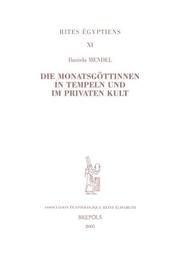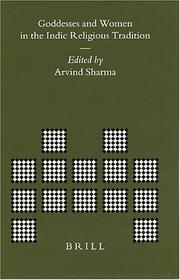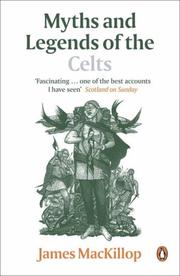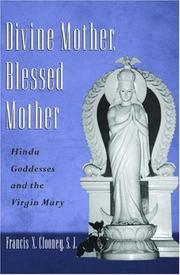| Listing 1 - 10 of 10 |
Sort by
|

ISBN: 2503518249 9782503518244 Year: 2005 Volume: 11 Publisher: Turnhout Bruxelles Brepols Association égyptologique Reine Elisabeth
Abstract | Keywords | Export | Availability | Bookmark
 Loading...
Loading...Choose an application
- Reference Manager
- EndNote
- RefWorks (Direct export to RefWorks)
Unter den sogenannten thoërisgestaltigen Göttinnen, d.h. aufrechtstehenden nilpferdgestaltigen Wesen mit Löwentatzen und einem Krokodil auf dem Rücken, können einige als Monatsgöttinnen identifiziert werden. Sie werden nach Aussage der Inschriften weder Thoëris noch Ipet oder Reret genannt und sind von diesen durch spezifische Namen abgegrenzt. Wieder andere gehören in das Umfeld der Monatsgöttinnen. Dazu zählen die Vertreterinnen der Epagomenentage und eine Gruppe von Begleiterinnen.Ikonographisch sind diese Monatsgöttinnen an einer hohen Federkrone zu erkennen; in seltenen Fällen erscheinen sie auch in Frauengestalt. Bei den Göttinnen der Epagomenentage oder den begleitenden Schutzgöttinnen variiert die Darstellung, hier trifft man auf löwen-, krokodil- und frauenköpfige thoërisgestaltige Figuren.Schon ab der 22. Dynastie können die Monatsgöttinnen mit einer Gruppe von 36 (bzw. 48 inklusive 12 eingeschobenen) Dekangöttern kombiniert werden. Sowohl diese Dekane als auch die Monats- und Tagesgöttinnen orientieren sich an einen idealisierten Kalender, dessen Jahresanfang durch den heliakischen Aufgang der Sothis definiert ist und der im sakralen Bereich der Tempel Anwendung findet. Die zwölf Monate des Kalenders werden jeweils durch eine Monatsgöttin vertreten, hinzu kommen die fünf Epagomenentage, zu denen die Tagesgöttinnen gehören. Im Idealfall können alle Monats- und Tagesgöttinnen von weiteren thoërisgestaltigen Schutzgöttinnen begleitet werden. Zu ihnen können sich aber auch Gottheiten der zwölf Monate des bürgerlichen Kalenders gesellen und aus der Reihe der schon oben genannten Dekane können sie von zwölf eingeschobenen Zusatzgöttern in Kindgestalt begleitet werden. Wie bei diesen Dekangöttern werden auch bei den Monatsgöttinnen Halbedelsteine und Metalle genannt, aus denen die Statuetten hergestellt werden sollten. Derartige Materialien finden sich bis in die heutige Zeit im Bereich der Astrologie wieder, wo sie den einzelnen Tierkreiszeichen zugeordnet werden.So wie alle Nilpferdgöttinnen sind auch diese Monatsgöttinnen Schutzgottheiten für die Zeit der Schwangerschaft und der Geburt sowie für das Kleinkind.
Egyptische godsdienst --- Epigrafie --- Epigraphie --- Religion égyptienne --- Goddesses, Egyptian --- Goddesses, Egyptian, in art --- Egyptian goddesses

ISBN: 9004124667 9786610859139 9047404238 128085913X 1433704188 9789047404231 9781433704185 9789004124660 9781280859137 Year: 2005 Publisher: Leiden Boston Brill
Abstract | Keywords | Export | Availability | Bookmark
 Loading...
Loading...Choose an application
- Reference Manager
- EndNote
- RefWorks (Direct export to RefWorks)
Goddesses and Women in the Indic Religious Tradition goes beyond the traditional sources that lie at the basis for determining the position of goddesses and women in India. Following the lead of a "hermeneutics of surprise" the book identifies, indeed, surprising new material - and conclusions; for example the analysis of Vedic Śrauta ritual. Or by offering surprising conclusions, when the location is obviously one involving women and goddesses, or anthropology discovers that the worship of the Great Goddess temporarily elevates the position of women. Other examples of the effectivity of the "hermeneutics of surprise" are seen when applied to the role of ḍākinīs , Śakti worship, the Marathi Sant tradition,and to Śaṅkara's commentaries.
Women in Hinduism --- Women and religion --- Goddesses [Hindu ] --- Women --- Religious aspects --- Hinduism --- Women in Hinduism. --- Women and religion. --- Hindu goddesses. --- Hinduism. --- Goddesses, Hindu --- Goddesses --- Religion and women --- Women in religion --- Religion --- Sexism in religion
Book
ISBN: 2721005200 9782721005205 9782721005205 Year: 2005 Publisher: 42-Saint-Étienne: [Paris]: Impr. Dumas-Titoulet, Des femmes,
Abstract | Keywords | Export | Availability | Bookmark
 Loading...
Loading...Choose an application
- Reference Manager
- EndNote
- RefWorks (Direct export to RefWorks)
Art [Prehistoric ] --- Goddesses [Prehistoric ] --- Symbolism --- Art préhistorique --- Déesses préhistoriques --- Déesses --- Symbolisme

ISBN: 0141017945 9780141017945 Year: 2005 Volume: *1
Abstract | Keywords | Export | Availability | Bookmark
 Loading...
Loading...Choose an application
- Reference Manager
- EndNote
- RefWorks (Direct export to RefWorks)
Celtic goddesses --- Celtic mythology --- Dieux celtiques --- Déesses celtiques --- Goddesses [Celtic ] --- Goden [Keltische ] --- Godinnen [Keltische ] --- Gods [Celtic ] --- Keltische godinnen --- Keltische mythologie --- Legenden [Keltische ] --- Legends [Celtic ] --- Légendes celtiques --- Mythologie [Keltische ] --- Mythologie celtique --- Mythology [Celtic ]
Book
ISBN: 8882653218 9788882653217 Year: 2005 Volume: 16 Publisher: Roma : L'Erma di Bretschneider,
Abstract | Keywords | Export | Availability | Bookmark
 Loading...
Loading...Choose an application
- Reference Manager
- EndNote
- RefWorks (Direct export to RefWorks)
Dionysia. --- Cults --- Greek drama (Satyr play) --- Orphisme --- Cultes --- Drame satirique grec --- 292.211 --- Religion Classical Greek and Roman Gods, goddesses, divinities and deities --- Cults - Greece.
Book
ISBN: 9179160514 9789179160517 Year: 2005 Publisher: Stockholm : Jonsered : Svenska Institutet i Athen Distributor Paul Aström,
Abstract | Keywords | Export | Availability | Bookmark
 Loading...
Loading...Choose an application
- Reference Manager
- EndNote
- RefWorks (Direct export to RefWorks)
Dionysus (Greek deity) --- Hylas (Greek mythology) --- Mythology, Greek --- Nymphs (Greek deities) --- Goddesses, Greek --- Greek mythology --- Dionysos (divinité grecque) --- Nymphes (divinités grecques) --- Hylas (mythologie grecque) --- Mythologie grecque --- Religion grecque --- Culte

ISBN: 0520940415 9786612358807 1282358804 1598755307 9780520940413 1417595914 9781417595914 0520231465 9780520231467 9781598755305 9781282358805 6612358807 9780520250055 0520250052 Year: 2005 Publisher: Berkeley, CA University of California Press
Abstract | Keywords | Export | Availability | Bookmark
 Loading...
Loading...Choose an application
- Reference Manager
- EndNote
- RefWorks (Direct export to RefWorks)
This landmark work presents the most illuminating portrait we have to date of goddesses and sacred female imagery in Western culture-from prehistory to contemporary goddess movements. Beautifully written, lucidly conceived, and far-ranging in its implications, this work will help readers gain a better appreciation of the complexity of the social forces- mostly androcentric-that have shaped the symbolism of the sacred feminine. At the same time, it charts a new direction for finding a truly egalitarian vision of God and human relations through a feminist-ecological spirituality. Rosemary Radford Ruether begins her exploration of the divine feminine with an analysis of prehistoric archaeology that challenges the popular idea that, until their overthrow by male-dominated monotheism, many ancient societies were matriarchal in structure, governed by a feminine divinity and existing in harmony with nature. For Ruether, the historical evidence suggests the reality about these societies is much more complex. She goes on to consider key myths and rituals from Sumerian, Babylonian, Egyptian, and Anatolian cultures; to examine the relationships among gender, deity, and nature in the Hebrew religion; and to discuss the development of Mariology and female mysticism in medieval Catholicism, and the continuation of Wisdom mysticism in Protestanism. She also gives a provocative analysis of the meeting of Aztec and Christian female symbols in Mexico and of today's neo-pagan movements in the United States.
Goddesses. --- Women and religion. --- Goddess religion. --- Goddess movement --- Great Goddess religion --- Great Mother Goddess religion --- Mother Goddess religion --- Neopaganism --- Witchcraft --- Religion and women --- Women in religion --- Religion --- Sexism in religion --- Female gods --- Gods --- Developmental psychology --- Religious studies --- Comparative religion --- Sociology of the family. Sociology of sexuality --- History --- ancient matriarchy. --- aztec religions. --- babylonia. --- christianity. --- comparative religions. --- deity. --- divine feminine. --- egypt. --- female mysticism. --- feminine divinity. --- femininity. --- feminist ecological spirituality. --- gender studies. --- goddess movements. --- goddesses. --- judaism. --- mariology. --- matriarchal structures. --- medieval catholicism. --- medieval religious literature. --- myths and rituals. --- religion. --- sacred female imagery. --- sacred feminine. --- spiritual. --- sumerian. --- western civilization. --- western culture. --- western religions.
Book
ISBN: 3447052147 9783447052146 Year: 2005 Volume: 8 Publisher: Wiesbaden : Harrassowitz,
Abstract | Keywords | Export | Availability | Bookmark
 Loading...
Loading...Choose an application
- Reference Manager
- EndNote
- RefWorks (Direct export to RefWorks)
Hathorsäulen und Hathorpfeiler haben bislang in der Forschung keine Einzeluntersuchungen erfahren. Dies verwundert und ist bedauerlich, denn sie stellen nicht nur ein interessantes Bauglied der altägyptischen Architektur dar, sondern haben vor allem auch einen religionsgeschichtlich bedeutenden Hintergrund.In den letzten Jahren sind durch neue Grabungen und Rekonstruktionen Hathorstützen in mehreren Kultanlagen neu oder besser erschlossen worden (z.B. Bubastis, Elephantine oder Memphis), die eine zusammenstellende Detailuntersuchung mehr als lohnen.Die bisher schlechte Publikationslage wird hier in zweierlei Hinsicht überwunden: eine ausführliche Dokumentation des erreichbaren Bestandes steht neben der Analyse zu Konzeption und Entwicklung der Hathorsäulen und -pfeiler. Um die entscheidende Grundlage zu erarbeiten, wird der Zeitabschnitt von den Anfängen dieses Stützentyps bis zum Ende der 3. Zwischenzeit behandelt. Dabei stehen mehrere Quellen zur Verfügung, von denen die wichtigste der archäologische Befund ist. Auch die Entwicklung der Spätzeit bis zur römischen Epoche, eine Zeitspanne mit vielen Belegen, wird kurz angerissen.
Architecture, Egyptian --- Columns --- Hathor (Egyptian deity) --- Athor (Egyptian deity) --- Athyr (Egyptian deity) --- Hathor the Great (Egyptian deity) --- Lady of the West (Egyptian deity) --- Goddesses, Egyptian --- Pillars --- Architecture --- Egyptian architecture --- Art --- Details --- Hathor --- Columns - Egypt --- Hathor - (Egyptian deity) - Art --- Hathor - (Egyptian deity)

ISBN: 0195170377 0199835373 0199738734 1423756657 128055911X 0198038089 9786610559114 9780195170375 Year: 2005 Publisher: Oxford Oxford university press
Abstract | Keywords | Export | Availability | Bookmark
 Loading...
Loading...Choose an application
- Reference Manager
- EndNote
- RefWorks (Direct export to RefWorks)
Goddesses, Hindu --- Christianity and other religions --- Hinduism --- Prayer-books and devotions --- History and criticism. --- Hinduism. --- Relations --- Christianity. --- Mary, --- -Christianity and other religions --- -Hinduism --- -232.931 --- 294.316.1 --- Religions --- Brahmanism --- Christianity --- Syncretism (Christianity) --- Goddesses --- Prayers and devotions --- -History and criticism. --- -Christianity. --- Maria. Mariologie --- Boeddhisme: christendom --- History --- ʻAdhrāʼ --- Arogyamata --- Ārōkkiyamāta --- Birhen ng mga Dukha --- Blessed Lady --- Blessed Mother --- Blessed Virgin Mary, --- Hagnē Theotokos --- Madonna, The --- Mama Mary --- Mare de Déu --- Maria, --- Mariam Astuatsatsin --- Marie, --- Marie Théotokos --- Marii︠a︡, --- Maryam, --- Maryja, --- Meryem Ana --- Miryam, --- Mother of God --- Muíre, --- Nossa Senhora --- Our Lady --- Our Lady of Good Health --- Our Lady of Sorrows --- Our Lady of the Blessed Sacrament --- Qiddīsah Maryam --- Theotokos --- Vierge Marie, --- Virgen María --- Virgin Mary, --- Virgin of the Poor --- Ynang Maria --- مريم --- مريم العذراء --- 성모마리아 --- Our Lady of Emmitsburg --- 294.316.1 Boeddhisme: christendom --- 232.931 Maria. Mariologie --- Hindu goddesses --- 232.931 --- Prayers and devotions&delete& --- History and criticism --- Relations&delete& --- Majka Isusova --- Mariam Astuatsatsin, --- Meryem Ana, --- Virgen María, --- Ynang Maria, --- Goddesses, Hindu - Prayer-books and devotions - History and criticism. --- Christianity and other religions - Hinduism. --- Hinduism - Relations - Christianity. --- Mary, - Blessed Virgin, Saint - Prayer-books and devotions - History and criticism. --- Mary, - Blessed Virgin, Saint

ISBN: 0520231465 9780520231467 Year: 2005 Publisher: Berkeley University of California press
Abstract | Keywords | Export | Availability | Bookmark
 Loading...
Loading...Choose an application
- Reference Manager
- EndNote
- RefWorks (Direct export to RefWorks)
This landmark work presents the most illuminating portrait we have to date of goddesses and sacred female imagery in Western culture--from prehistory to contemporary goddess movements. Beautifully written, lucidly conceived, and far-ranging in its implications, this work will help readers gain a better appreciation of the complexity of the social forces-- mostly androcentric--that have shaped the symbolism of the sacred feminine. At the same time, it charts a new direction for finding a truly egalitarian vision of God and human relations through a feminist-ecological spirituality. Rosemary Radford Ruether begins her exploration of the divine feminine with an analysis of prehistoric archaeology that challenges the popular idea that, until their overthrow by male-dominated monotheism, many ancient societies were matriarchal in structure, governed by a feminine divinity and existing in harmony with nature. For Ruether, the historical evidence suggests the reality about these societies is much more complex. She goes on to consider key myths and rituals from Sumerian, Babylonian, Egyptian, and Anatolian cultures; to examine the relationships among gender, deity, and nature in the Hebrew religion; and to discuss the development of Mariology and female mysticism in medieval Catholicism, and the continuation of Wisdom mysticism in Protestanism. She also gives a provocative analysis of the meeting of Aztec and Christian female symbols in Mexico and of today's neo-pagan movements in the United States.
History of civilization --- Christian church history --- Mediterranean countries --- Europe --- Goddess religion. --- Goddesses. --- Women and religion. --- Déesses --- Déesses-mères--Culte --- Femmes dans la religion --- Femmes et religion --- Goddess movement --- Goddess religion --- Goddesses --- Godinnen --- Godsdienst en vrouwen --- Great Goddess religion --- Great Mother Goddess religion --- Moedergodinnen--Verering --- Mother Goddess religion --- Religion and women --- Religion et femmes --- Vrouwen en godsdienst --- Vrouwen in de godsdienst --- Women and religion --- Women in religion --- 291.21 --- 291.21 Onderwerp van de godsdienst: goden en geesten; aanbidding; godensagen --- Onderwerp van de godsdienst: goden en geesten; aanbidding; godensagen --- Religion --- Sexism in religion --- Neopaganism --- Witchcraft --- Female gods --- Gods --- Developmental psychology --- Comparative religion --- Sociology of the family. Sociology of sexuality --- Gender --- History --- Matriarchy --- Spirituality --- Images of women --- Book
| Listing 1 - 10 of 10 |
Sort by
|

 Search
Search Feedback
Feedback About UniCat
About UniCat  Help
Help News
News